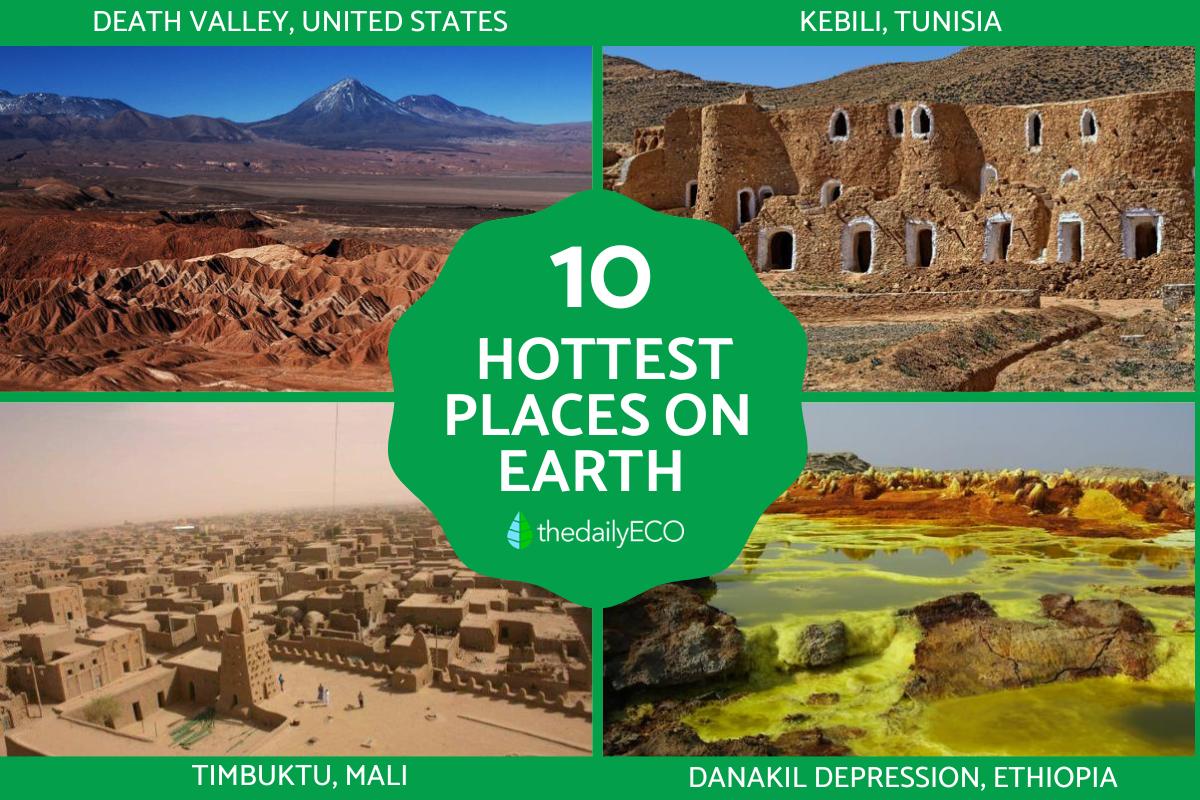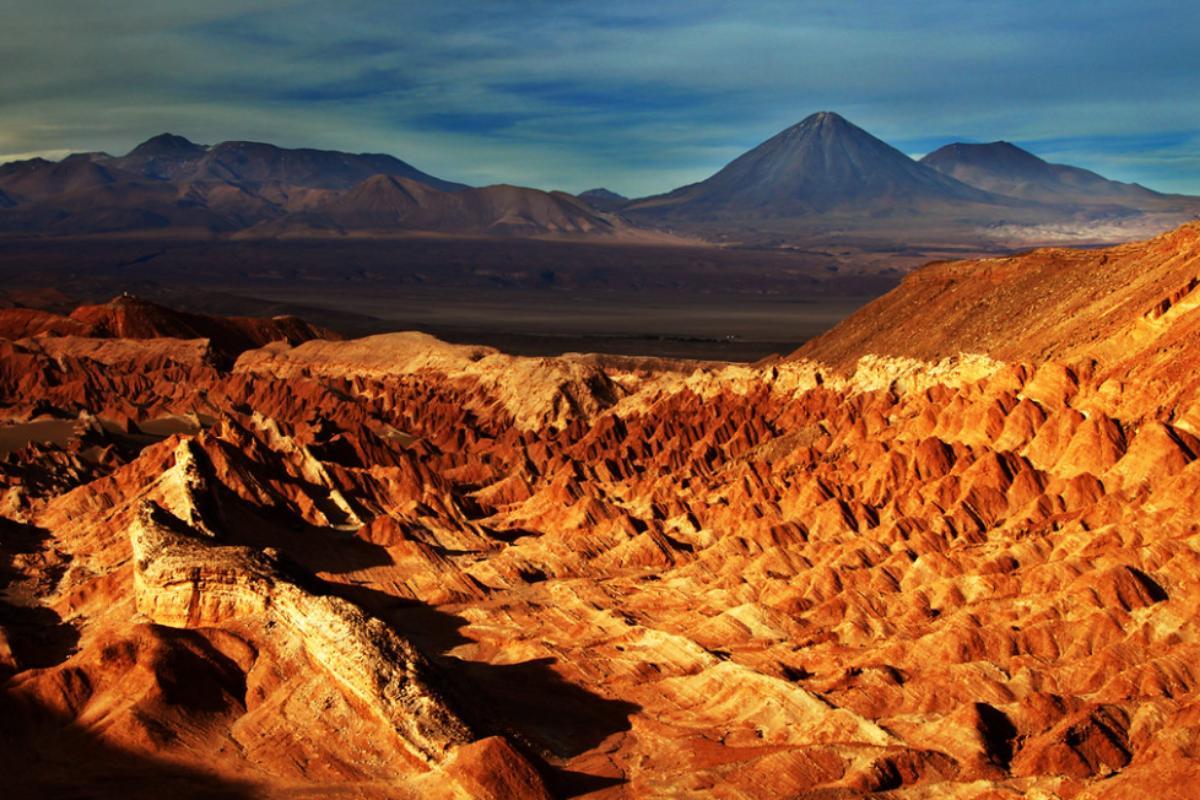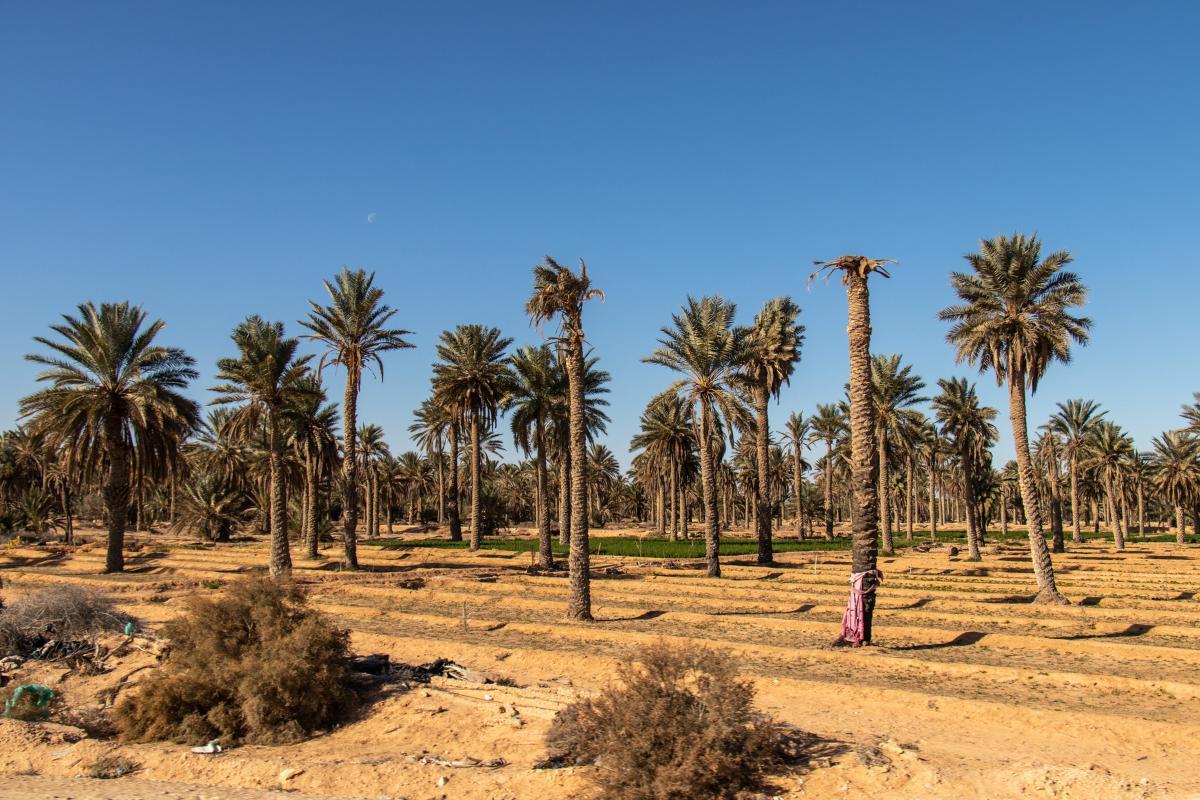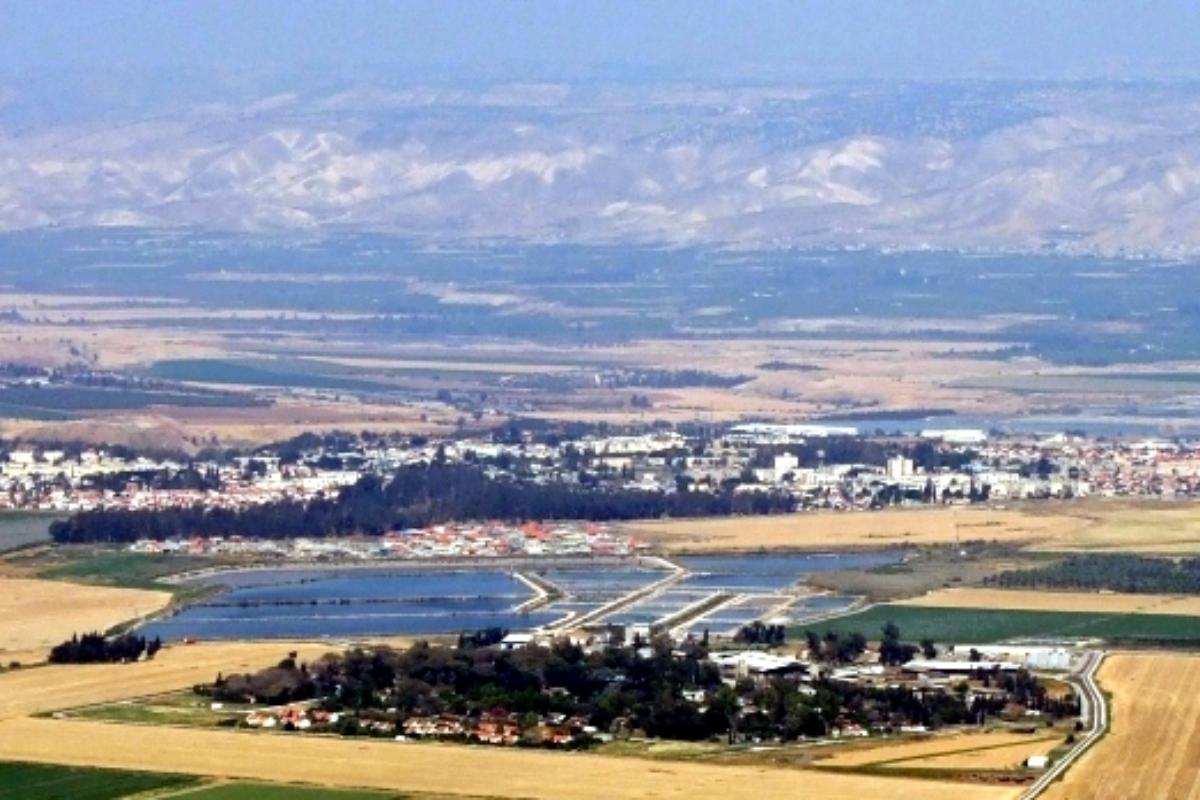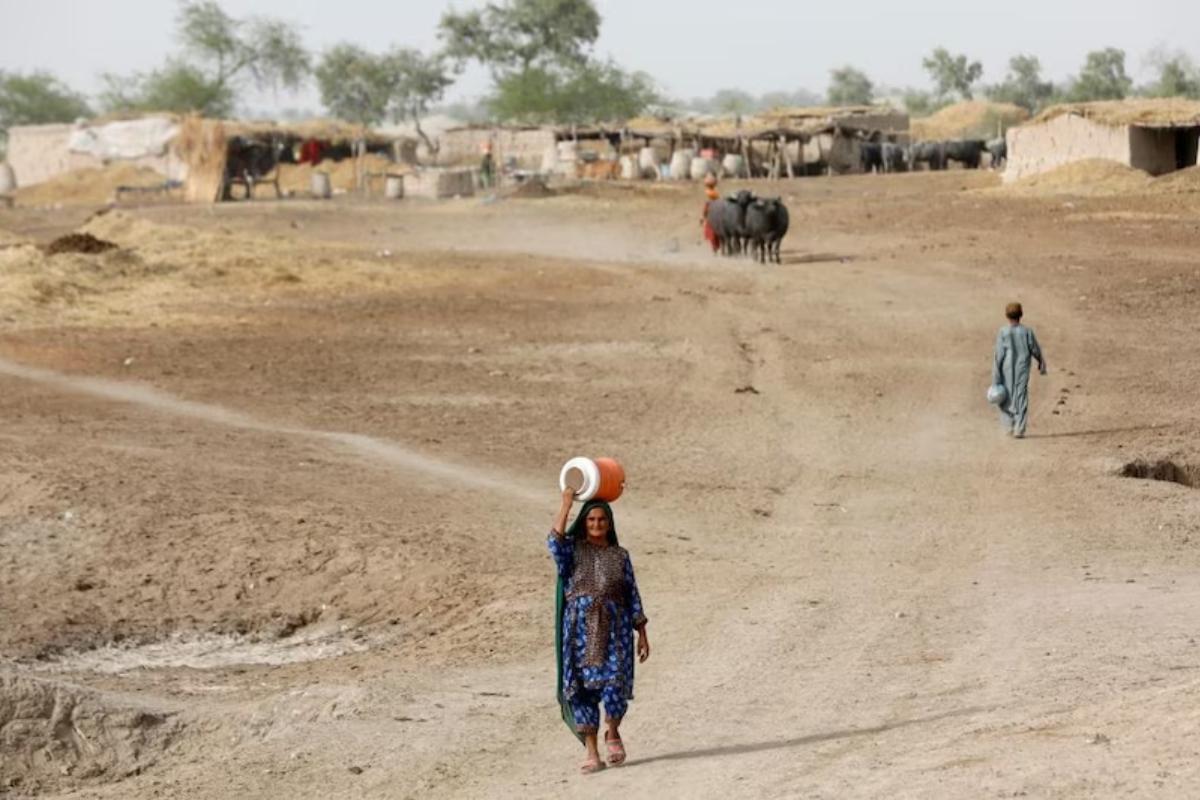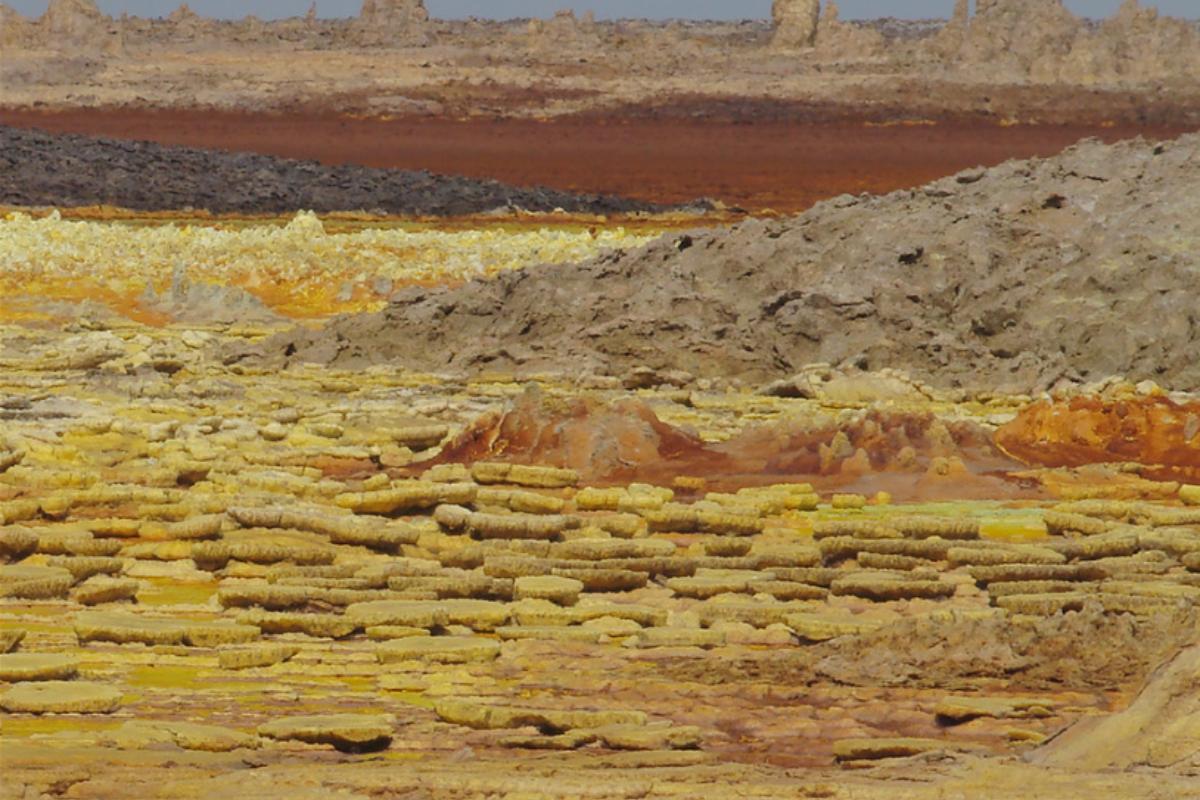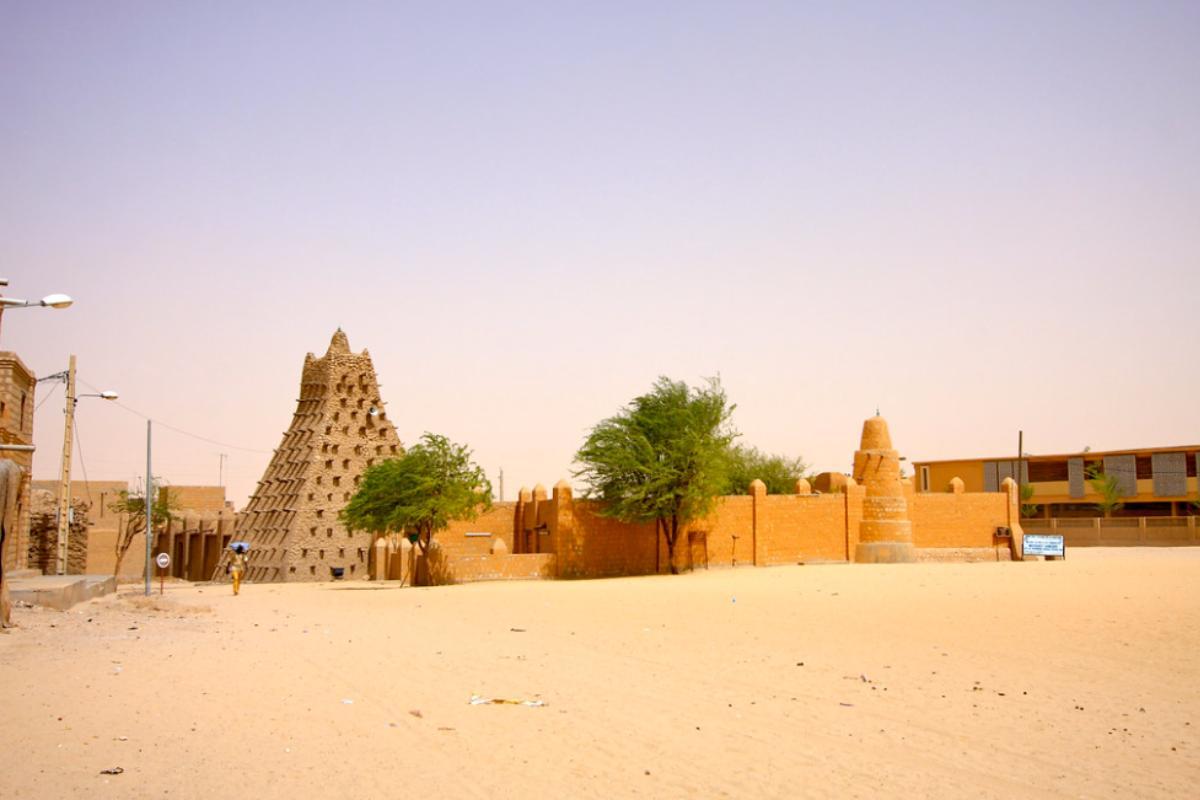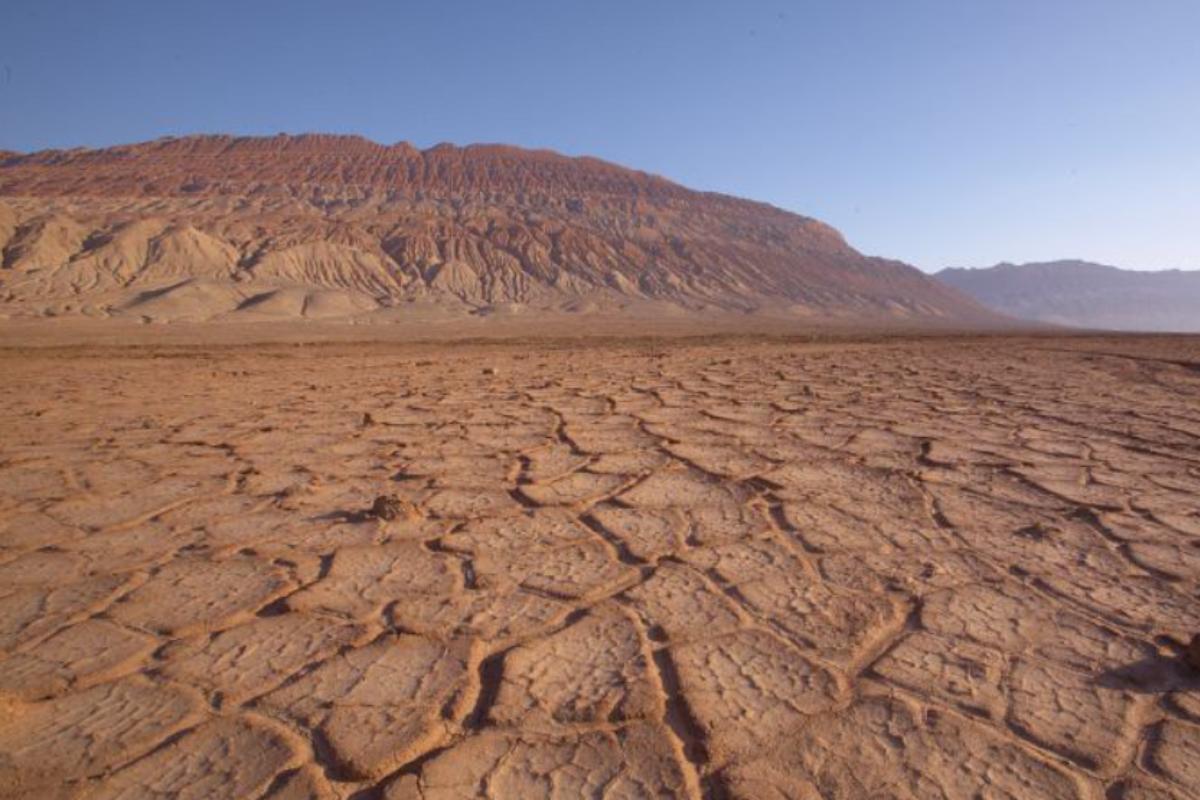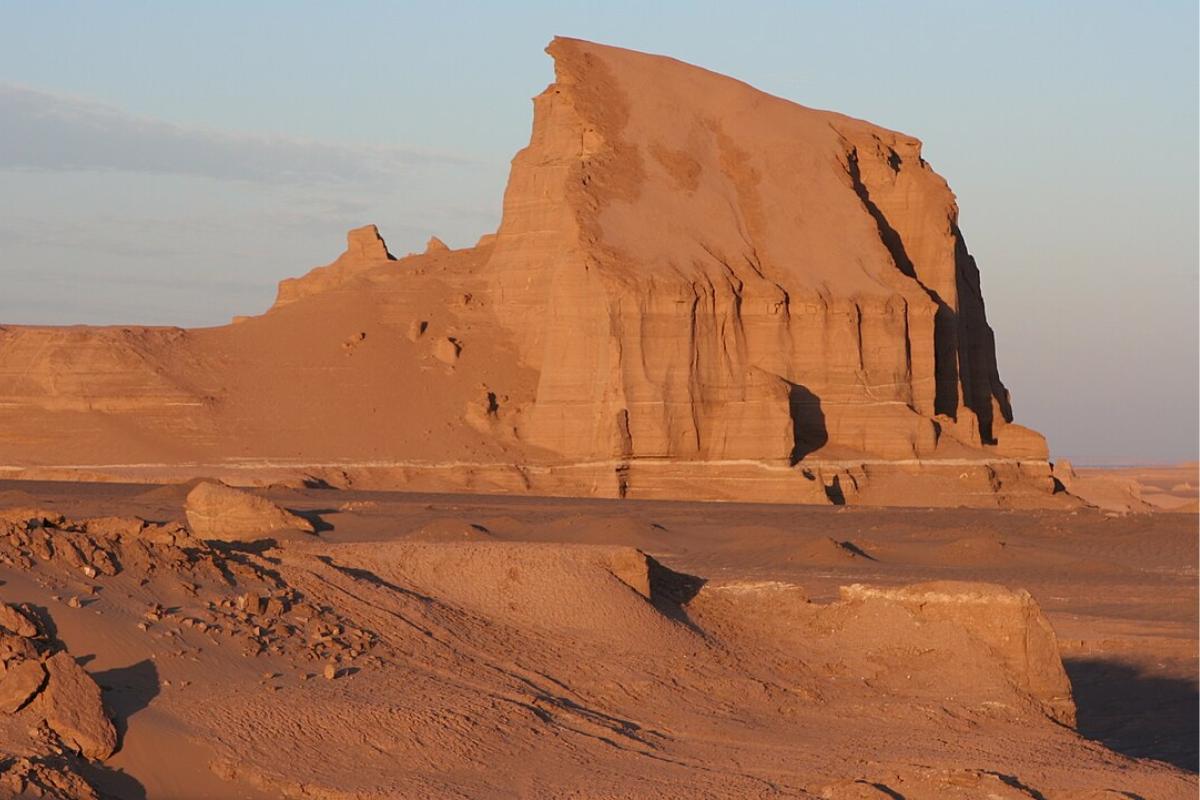Where on Earth Is the Hottest?


The Earth is a planet of extremes, with temperatures ranging from the icy poles to scorching deserts. While many of us seek relief from the heat, there are places on our planet where the mercury consistently climbs to unimaginable heights. Whether it's the record-breaking surface temperatures of the Iranian desert or the searing sun of the Sahara, join us as we uncover the planet's hottest locales and the extraordinary stories behind them.
In the following article by thedailyECO we explore the top 10 hottest places on Earth.
- Death Valley, United States
- Kebili, Tunisia
- Tirat Zvi, Beit She'an Valley, Israel
- Jacobabad, Pakistan
- Sweihan, United Arab Emirates
- Danakil Depression, Ethiopia
- Lytton, Canada
- Timbuktu, Mali
- Flaming Mountains, China
- Dasht-e Lut, Iran
Death Valley, United States
Death Valley, located in the Mojave Desert in California, United States, is renowned for being one of the hottest places on Earth. This extreme and arid valley is known for its high temperatures and severe environmental conditions.
Death Valley holds the world record for the highest temperature ever recorded, reaching 56.7 degrees Celsius (134 degrees Fahrenheit) on July 10, 1913, at Furnace Creek. This record has long been a benchmark for measuring extreme heat on our planet.
During the summer, daytime temperatures in Death Valley often exceed 49 degrees Celsius (120 degrees Fahrenheit). Nighttime provides only slight relief, with temperatures frequently remaining above 30 degrees Celsius (86 degrees Fahrenheit). The region is also characterized by its low rainfall, averaging less than 50 millimeters (2 inches) annually, which contributes to its arid and inhospitable environment.
The intense heat in Death Valley causes the air to heat unevenly, creating a mirage effect known as heat shimmer. It's like looking through a wavy window.

Kebili, Tunisia
Kebili, a town in southern Tunisia, is renowned for its extreme temperatures and desert climate. Located in the heart of the Sahara Desert, Kebili is one of the hottest regions on the African continent and in the world.
The town has recorded temperatures reaching up to 55ºC (131ºF) on some occasions, although the highest official record stands at 50ºC (122ºF).
Kebili is one of the oldest inhabited areas in Tunisia, with a history spanning thousands of years. Despite the harsh climatic conditions, the city and its surroundings have been continuously inhabited, largely due to the presence of oases that provide water and support agriculture. These oases are crucial for the survival of the local population, enabling the cultivation of dates and other crops.
Due to its remote location and minimal light pollution, Kebili has become a sought-after destination for astronomers. The clear desert skies provide optimal conditions for observing celestial bodies, making it a valuable site for scientific research.

Tirat Zvi, Beit She'an Valley, Israel
Tirat Zvi, a kibbutz in Israel's Beit She'an Valley, is known for its extreme heat. This agricultural settlement has recorded some of the highest temperatures in Asia, including a record of 54 degrees Celsius (129.2 degrees Fahrenheit) in June 1942, one of the highest ever documented in the region.
Summers in Tirat Zvi are extremely hot, with daytime temperatures often exceeding 40 degrees Celsius (104 degrees Fahrenheit). Winters, in contrast, are mild and relatively short, offering more pleasant temperatures.
Tirat Zvi holds a significant place in Israeli history as one of the first religious kibbutzim. Founded in 1937, it pioneered a unique blend of communal living and religious observance, setting a precedent for many other religious communities in Israel.

Jacobabad, Pakistan
Jacobabad, a city in the province of Sindh, Pakistan, is recognized as one of the hottest places on the planet.
This city has recorded some of the highest temperatures in the world, reaching up to 52 degrees Celsius (125.6 degrees Fahrenheit). Conditions in Jacobabad are so extreme that it is often cited as one of the most challenging places to live due to the intense heat.
During the summer months, daytime temperatures regularly exceed 45 degrees Celsius (113 degrees Fahrenheit), and nights do not offer much relief, with temperatures typically staying above 30 degrees Celsius (86 degrees Fahrenheit).
The people of Jacobabad have developed unique coping mechanisms to survive the intense heat. Traditional architecture, such as the use of thick mud walls, and local customs, like early morning and late evening activities, are essential for daily life.

Sweihan, United Arab Emirates
Sweihan, a small settlement in the Emirate of Abu Dhabi, United Arab Emirates, is renowned for its extreme temperatures and desert climate.
This location has earned a spot among the world's highest temperature records. In July 2021, Sweihan reached a scorching temperature of 51.8 degrees Celsius (125.2 degrees Fahrenheit), marking it as one of the hottest places on the planet.
Situated in the heart of the Arabian Desert, Sweihan experiences an arid climate with intensely hot summers and mild winters. During the summer, daytime temperatures often exceed 45 degrees Celsius (113 degrees Fahrenheit), while nighttime temperatures usually remain above 30 degrees Celsius (86 degrees Fahrenheit), providing little respite from the heat.
Despite the arid desert environment, Sweihan is known for its surrounding farms. This oasis-like setting is a testament to the UAE's innovative agricultural practices and its ability to thrive in challenging conditions.

Danakil Depression, Ethiopia
The Danakil Depression, located in northeastern Ethiopia, is one of the hottest and most extreme places on the planet.
Situated in the Afar region, this inhospitable area is characterized by its extreme temperatures, volcanic activity, and surreal landscapes. The average daily temperature in the Danakil Depression often exceeds 34 degrees Celsius (93.2 degrees Fahrenheit), with highs frequently reaching up to 50 degrees Celsius (122 degrees Fahrenheit).
Despite its harsh conditions, the Danakil Depression is believed to be one of the cradles of humankind. The famous fossil "Lucy" was discovered here, providing crucial evidence about human evolution.

Lytton, Canada
Lytton, a small town in the province of British Columbia, Canada, is known for recording the highest temperatures in the country's history.
In June 2021, Lytton reached a record temperature of 49.6 degrees Celsius (121.3 degrees Fahrenheit), underscoring the region's vulnerability to extreme heat events.
Unlike other extremely hot regions of the world, Lytton is located at a higher latitude and typically experiences a milder climate. However, during the summer of 2021, an intense heat wave known as a "heat dome" caused temperatures to rise dramatically in western Canada and the northwestern United States. This unprecedented heat wave not only broke historical records but also had devastating consequences for local communities and ecosystems.
In 2021, Lytton experienced a catastrophic wildfire that destroyed most of the town.
If you enjoyed learning about the hottest places on Earth, you might also be curious about what causes those intense heat waves. Discover more in our other article.

Timbuktu, Mali
Timbuktu, a historic city in Mali, is renowned for its rich cultural and academic heritage as well as its extremely high temperatures. Situated on the edge of the Sahara Desert, Timbuktu experiences an arid climate with scorching summers and minimal rainfall.
During the hottest months, temperatures in Timbuktu can soar to 48ºC (118ºF). Daytime temperatures regularly exceed 40ºC (104ºF) during summer, while nighttime temperatures often remain above 25ºC (77ºF), offering only slight relief. The region's lack of rainfall is a characteristic feature of desert climates, where arid conditions prevail due to specific atmospheric and geographic factors.
Its strategic location on the trans-Saharan trade routes made it a meeting point for diverse cultures and religions. Arab, Berber, and Sudanese merchants exchanged gold, salt, slaves, and other goods, enriching the city and fostering intellectual development.
Curious about the diverse landscapes of the world's deserts? Dive deeper into the different types of deserts in our related article.

Flaming Mountains, China
The Flaming Mountains, located in the Xinjiang region of northwest China, are renowned for their extreme temperatures and arid desert environment.
During the summer, temperatures in this region can soar up to 48 degrees Celsius (118 degrees Fahrenheit).
The name "Flaming Mountains" is derived from the reddish color of the rocks, which appear to be burning under the intense sun. This visual effect, combined with the high temperatures, creates the illusion that the mountains are actually on fire. In July 2008, a weather station in the Flaming Mountains recorded a surface temperature of 66.8 degrees Celsius (152.2 degrees Fahrenheit), one of the highest temperatures ever recorded on Earth's surface.
A local legend claims that the Flaming Mountains are actually the remnants of a slain dragon. Its blood seeped into the ground, turning the sandstone a fiery red.

Dasht-e Lut, Iran
Dasht-e Lut, located in southeastern Iran, is renowned for recording some of the highest temperatures on Earth.
In 2005, NASA reported that surface temperatures in this desert region reached a staggering 70.7°C (159.3°F), marking the highest temperature ever measured on Earth's surface by satellites. This extreme heat underscores the harshness of the climate in this area.
Dasht-e Lut experiences a hyper-arid climate, with daytime temperatures in the summer frequently exceeding 45°C (113°F). While nighttime temperatures may drop slightly, they often remain above 30°C (86°F), providing little respite from the intense heat.
Dasht-e Lut boasts massive sand dunes that constantly shift due to strong winds. It's also home to rock formations sculpted by nature over millions of years.

If you want to read similar articles to Where on Earth Is the Hottest?, we recommend you visit our Facts about Earth and the universe category.
- JOHN LOCHER, ADAM BEAM and SETH BORENSTEIN. July 17, 2023. California: Death Valley boils in the midst of a heat wave. Los Angeles Time. Available at: https://www.latimes.com/espanol/california/articulo/2023-07-17/california-el-valle-de-la-muerte-hierve-en-medio-de-ola-de-calor
- Beyza Binnur Dönmez. June 28, 2021. Canada records its highest temperature record. ANADOLU AJANSI. Available at: https://www.aa.com.tr/es/mundo/canad%C3%A1-registra-su-r%C3%A9cord-de-temperatura-m%C3%A1s-alta/2288025
- Climate and average weather throughout the year in the United Arab Emirates. WeatherSpark. Available at: https://es.weatherspark.com/countries/AE





